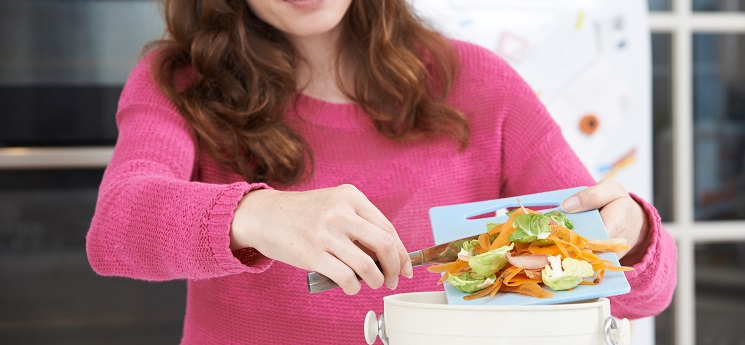In Australia, more than one-third of the average rubbish bin will be filled with food waste – the equivalent of one in five shopping bags worth of food simply thrown away.
Nearly half of all fruit and vegetables produced each year in Australia go to waste, with five million tonnes of food ending up in landfill each year.
According to OzHarvest, food waste costs the Australian economy $20 billion each year. Two-thirds of food waste will occur in the home or in customer-facing businesses such as restaurants.
These simple tips and ideas can help you make the most of the food in your fridge.
1. Plan your portions
One of the biggest causes of household food waste is miscalculating how much of a dry ingredient, such as rice or pasta, you actually need.
As a rule of thumb, half a mug of uncooked rice grains will serve two people, and a single portion of uncooked spaghetti is around the same width as a $1 coin.
Read: Turn your food scraps into treasure
Any surplus you do have can be stored in an airtight container in the fridge – just make sure you follow the guidelines on reheating rice to avoid food poisoning: cool it quickly, keep it in the fridge for no more than a day, reheat it thoroughly so it is steaming hot all the way through before eating, and only reheat rice once.
2. Sign up to a recipe box
Recipe boxes such as Marley Spoon, Hello Fresh and Every Plate send you the precise amounts of ingredients you need to cook each recipe, so you don’t have to throw away excess food in the process.
You could also sign up to Good & Fugly, a food box that works with farmers across Australia to rescue misshapen fruit and vegies at risk of going to landfill.
Read: Is outsourcing your shopping and meal planning worth it?
3. Compost your scraps
Composting your kitchen waste, including vegetable peelings and wilting herbs, is super easy to do. Pretty much all types of organic refuse make excellent compost material, which can bring your garden to life in the summer.
Pop your scraps into a compost bin and they’ll break down over the course of around a year, giving your free compost to fertilise your garden soil.
4. Use your freezer
Vegetables that are wilting in the fridge, such as spinach and kale, can be stored for months in the freezer and used as a base for smoothies and soups.
You can also keep frozen broccoli, peas and chopped pepper on hand to toss into stir fries, rather than buying them fresh every time you fancy cooking a noodle dish.
5. Take a photo of your fridge before you head to the supermarket
There’s nothing more annoying than buying lots of food at the supermarket, only to realise that you already had half of the ingredients sitting in your fridge.
The beauty of smartphones means you can take a quick snap of your cupboards before you leave the house, so you can plan better and only buy the food that you really need,
6. Learn how to store foods properly
There are certain storage techniques that can make produce last longer. For instance, placing the stems of your herbs in a shallow cup of water while in the fridge can extend their shelf life.
Similarly, a squeeze of lemon on an uneaten avocado half can prevent premature browning, while storing your milk in the middle of the fridge, rather than the door, means it’s less likely to spoil from uneven temperatures.
Read: How companies are fighting food waste
If all else fails, lots of fresh ingredients can be cooked and whizzed into a delicious soup. Pop in your freezer and enjoy it another day.
Do you plan your meals each week? Do you throw food away at the end of the week? Why not share how you reduce food waste in the comments section below?
– With PA
If you enjoy our content, don’t keep it to yourself. Share our free eNews with your friends and encourage them to sign up.

